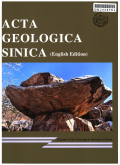- 钛学术文献服务平台 \
- 学术期刊 \
- 基础科学期刊 \
- 天文学、地球科学期刊 \
- 地质学报(英文版)期刊 \
The Impact of Climatic and Environmental Factors on n-Alkanes Indices in Southwestern Tibetan Plateau
The Impact of Climatic and Environmental Factors on n-Alkanes Indices in Southwestern Tibetan Plateau
基本信息来源于合作网站,原文需代理用户跳转至来源网站获取
摘要:
n-Alkanes are widely used in paleoenvironmental reconstructions.However,our understanding of changes in the distribution of n-alkanes with climatic and environmental factors remains unclear in arid/semi-arid regions.We sampled 26 surface sediments from three climatic zones across the southwestern Tibetan Plateau to evaluate the sensitivity of chain length distributions of n-alkanes to climatic and environmental parameters.Our observations demonstrate that average chain length(ACL),proportion of aquatic macrophyte(Paq),carbon preference index(CPI)and ratio of the contents of nC27 and nC31(nC27/nC31)are all sensitive to hydroclimatic conditions.In contrast to commonly-adopted assumptions,the correlations between these indices and hydrological parameters are not always good,which indicates that the interpretation of n-alkane indices is special on the southwestern Tibetan Plateau.These might be related to the vegetation characteristics and seasonality of biological activity,and need to be considered in paleoclimatic reconstruction.The impact of seasonal precipitation on n-alkanes indices was also evaluated.

推荐文章
Behavior of rare earth elements in granitic profiles, eastern Tibetan Plateau, China
Chemical weathering
Eu anomaly
Critical zone
Soil weathering
A review of POPs in the fragile critical zone of the Tibetan Plateau: transport and transformation
Tibetan Plateau
Critical zone
Transport
Transformation
POPs
Variations of trace elements under hydrological conditions in the Min River, Eastern Tibetan Plateau
Trace elements
Concentration-discharge relationship
Tibetan Plateau
River
Boron isotope geochemistry of Zigetang Co saline lake sediments, Tibetan Plateau
Boron isotopes
Zigetang Co
Equilibrium isotopic fractionation
Boron concentration
内容分析
关键词云
关键词热度
相关文献总数
(/次)
(/年)
引文网络
引文网络
二级参考文献 (242)
共引文献 (33)
参考文献 (27)
节点文献
引证文献 (0)
同被引文献 (0)
二级引证文献 (0)
1961(2)
- 参考文献(0)
- 二级参考文献(2)
1964(1)
- 参考文献(0)
- 二级参考文献(1)
1966(1)
- 参考文献(0)
- 二级参考文献(1)
1967(7)
- 参考文献(0)
- 二级参考文献(7)
1969(2)
- 参考文献(0)
- 二级参考文献(2)
1970(1)
- 参考文献(0)
- 二级参考文献(1)
1971(1)
- 参考文献(0)
- 二级参考文献(1)
1973(3)
- 参考文献(0)
- 二级参考文献(3)
1976(1)
- 参考文献(0)
- 二级参考文献(1)
1977(1)
- 参考文献(0)
- 二级参考文献(1)
1978(1)
- 参考文献(0)
- 二级参考文献(1)
1979(1)
- 参考文献(0)
- 二级参考文献(1)
1980(1)
- 参考文献(0)
- 二级参考文献(1)
1981(2)
- 参考文献(0)
- 二级参考文献(2)
1982(1)
- 参考文献(0)
- 二级参考文献(1)
1984(4)
- 参考文献(0)
- 二级参考文献(4)
1986(4)
- 参考文献(0)
- 二级参考文献(4)
1987(5)
- 参考文献(0)
- 二级参考文献(5)
1988(2)
- 参考文献(0)
- 二级参考文献(2)
1990(3)
- 参考文献(0)
- 二级参考文献(3)
1991(2)
- 参考文献(0)
- 二级参考文献(2)
1992(2)
- 参考文献(0)
- 二级参考文献(2)
1993(8)
- 参考文献(0)
- 二级参考文献(8)
1994(1)
- 参考文献(0)
- 二级参考文献(1)
1995(2)
- 参考文献(0)
- 二级参考文献(2)
1996(7)
- 参考文献(0)
- 二级参考文献(7)
1997(5)
- 参考文献(0)
- 二级参考文献(5)
1998(4)
- 参考文献(0)
- 二级参考文献(4)
1999(2)
- 参考文献(0)
- 二级参考文献(2)
2000(15)
- 参考文献(1)
- 二级参考文献(14)
2001(5)
- 参考文献(0)
- 二级参考文献(5)
2002(11)
- 参考文献(0)
- 二级参考文献(11)
2003(14)
- 参考文献(1)
- 二级参考文献(13)
2004(9)
- 参考文献(1)
- 二级参考文献(8)
2005(22)
- 参考文献(1)
- 二级参考文献(21)
2006(22)
- 参考文献(2)
- 二级参考文献(20)
2007(12)
- 参考文献(1)
- 二级参考文献(11)
2008(11)
- 参考文献(2)
- 二级参考文献(9)
2009(12)
- 参考文献(3)
- 二级参考文献(9)
2010(8)
- 参考文献(1)
- 二级参考文献(7)
2011(10)
- 参考文献(2)
- 二级参考文献(8)
2012(8)
- 参考文献(1)
- 二级参考文献(7)
2013(12)
- 参考文献(2)
- 二级参考文献(10)
2014(4)
- 参考文献(2)
- 二级参考文献(2)
2015(5)
- 参考文献(1)
- 二级参考文献(4)
2016(6)
- 参考文献(3)
- 二级参考文献(3)
2017(3)
- 参考文献(1)
- 二级参考文献(2)
2018(2)
- 参考文献(1)
- 二级参考文献(1)
2020(1)
- 参考文献(1)
- 二级参考文献(0)
2021(0)
- 参考文献(0)
- 二级参考文献(0)
- 引证文献(0)
- 二级引证文献(0)
引文网络交叉学科
相关学者/机构
期刊影响力
地质学报(英文版)
主办单位:
中国地质学会
出版周期:
双月刊
ISSN:
1000-9515
CN:
11-2001/P
开本:
16开
出版地:
北京复外百万庄26号
邮发代号:
创刊时间:
1922
语种:
eng
出版文献量(篇)
3189
总下载数(次)
0
总被引数(次)
14369
期刊文献
相关文献
推荐文献
- 期刊分类
- 期刊(年)
- 期刊(期)
- 期刊推荐
力学
化学
地球物理学
地质学
基础科学综合
大学学报
天文学
天文学、地球科学
数学
气象学
海洋学
物理学
生物学
生物科学
自然地理学和测绘学
自然科学总论
自然科学理论与方法
资源科学
非线性科学与系统科学
地质学报(英文版)2022
地质学报(英文版)2021
地质学报(英文版)2020
地质学报(英文版)2019
地质学报(英文版)2018
地质学报(英文版)2017
地质学报(英文版)2016
地质学报(英文版)2015
地质学报(英文版)2014
地质学报(英文版)2013
地质学报(英文版)2012
地质学报(英文版)2011
地质学报(英文版)2010
地质学报(英文版)2009
地质学报(英文版)2008
地质学报(英文版)2007
地质学报(英文版)2006
地质学报(英文版)2005
地质学报(英文版)2004
地质学报(英文版)2003
地质学报(英文版)2002
地质学报(英文版)2001
地质学报(英文版)2000
地质学报(英文版)1999

 免费查重
免费查重










